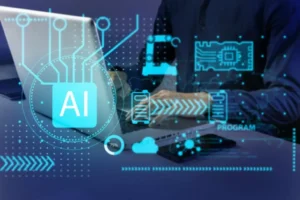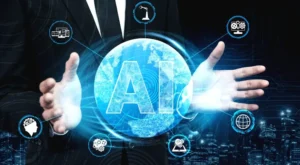9 Top-notch Examples of Natural Language Processing in Action
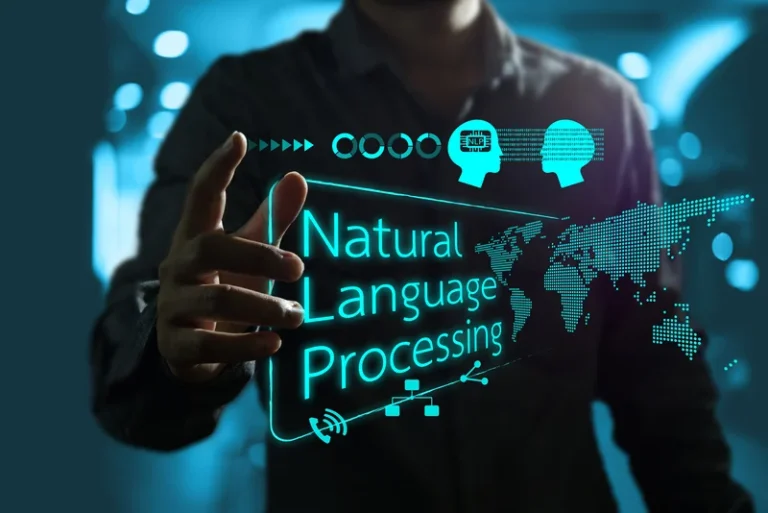
Have you ever wondered how virtual assistants comprehend the language we speak? It’s apparent how humans learn the language — children grow, hear their parents’ speech, and learn to mimic it. But whom do machines mimic and learn from? If we find out what makes Google Maps or Apple’s Siri such incredible tools, we could also implement this technology into our business processes. The secret is not complicated and lies in a unique technology called Natural Language Processing (NLP). Google Maps and Siri are the two great natural language processing examples that help much with our daily routines.
Today, we aim to explain what is NLP, how to implement it in business and present 9 natural language processing examples of top companies utilizing this technology. So let’s get started.
Understanding Natural Language Processing
First, we must go deeper into NLP’s mechanisms to understand its significance in business. The branch of artificial intelligence, Natural Language Processing, is concerned with using natural language by computers and people to communicate. The ultimate goal of NLP is to effectively read, comprehend, and make sense of human language.
The foundation of natural language processing is composed of several fundamental ideas. Here are the major ones:
- Teaching robots the grammar and meanings
- Implementing sentimental analysis
- Instructing chatbots on how to yield topic segmentation and NER
- Applying machine learning methods
Teaching robots the grammar and meanings of language, syntax, and semantics is crucial. The technology uses these concepts to comprehend sentence structure, find mistakes, recognize essential entities, and evaluate context.
Another essential topic is sentiment analysis, which lets computers determine the sentiment underlying textual input and whether a statement is favorable, unfavorable, or neutral. This idea has broad ramifications, particularly for customer relationship management and market research.
In addition, NLP uses topic segmentation and named entity recognition (NER) to separate the information into digestible chunks and identify critical components in the text. These ideas make it easier for computers to process and evaluate enormous volumes of textual material, which makes it easier for them to provide valuable insights.
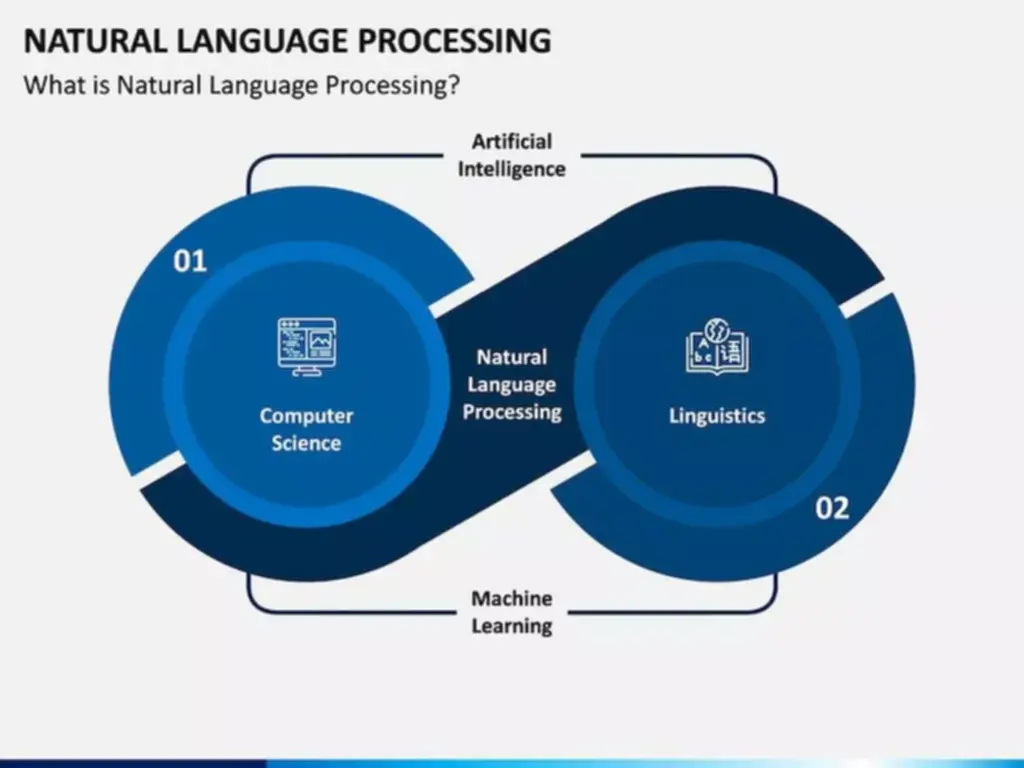
Finally, natural language processing uses machine learning methods to enhance language comprehension and interpretation over time. These algorithms let the system gain knowledge from previous encounters, improve functionality, and predict inputs in the future.
NLP is more than simply teaching computers to comprehend human language. It also concerns their adaptability, dynamic, and capability, mirroring human communication. Understanding these fundamental ideas helps us better recognize how this contemporary technology fits into business processes and provides a platform for further investigation of its potential and valuable uses.

We are confident that we have what it takes to help you get your platform from the idea throughout design and development phases, all the way to successful deployment in a production environment!
Overview of Natural Language Processing examples in action
Natural Language Processing is more than just a trendy term in technology; it is a catalyst for the development of several industries, and businesses from all sectors are using its potential. Let’s examine 9 real-world NLP examples that show how high technology is used in various industries.
1. NLP in e-commerce on Amazon
Amazon has always been at the forefront of implementing AI technology as a leading online retailer. Alexa, Amazon’s virtual assistant, is one of the company’s most noteworthy NLP implementations. Users may use this voice-activated assistant to buy, play music, check the weather, operate intelligent home gadgets, and more. It employs natural language processing to comprehend and reply to consumer inquiries. Alexa’s NLP expertise enables her to understand the intricacies and context of human speech, resulting in detailed replies.
Amazon analyzes the sentiment of customer reviews using NLP. The system searches through tens of thousands of studies to determine the general attitude of consumers toward a product, generating information that may be used for customer service automation, product design, and marketing tactics.
2. NLP in search engines: Google
Google has employed computer learning extensively to hone its search results. Google’s BERT (Bidirectional Encoder Representations from Transformers), an NLP pre-training method, is one of the crucial implementations. BERT aids Google in comprehending the context of the words used in search queries, enhancing the search algorithm’s comprehension of the purpose and generating more relevant results. Google Translate is a powerful NLP tool to translate text across languages. It identifies the syntax and semantics of several languages, offering relatively accurate translations and promoting international communication.
3. NLP in healthcare using IBM Watson
NLP is transforming diagnosis and therapy in the medical field. NLP has been used by IBM Watson, a top AI platform, to enhance healthcare results. Watson Oncology analyzes a patient’s medical records and pertinent data using natural language processing, assisting doctors in choosing the most appropriate course of therapy. Drug discovery uses NLP from IBM Watson. It finds possible new applications for already-approved medications, accelerating the development of new drugs by evaluating vast amounts of scientific literature and research articles.
4. NLP in financial services at American Express
Financial services company American Express utilizes NLP to spot fraud. The system examines multiple text data types to find patterns suggestive of fraud, such as transaction records and consumer complaints. This increases transactional security and prevents millions of dollars in possible losses. Additionally, with the help of computer learning, businesses can implement customer service automation. Its “Amex Bot” chatbot uses artificial intelligence to analyze and react to consumer inquiries and enhances the customer experience.
5. NLP in the food and beverage business at Starbucks
Starbucks was a pioneer in the food and beverage sector in using NLP. Their mobile app has an AI-powered chatbot virtual barista that accepts orders verbally or textually. After getting client confirmation, the chatbot understands the demand and transmits it to the nearby Starbucks location. Starbucks also uses natural language processing for opinion analysis to keep track of consumer comments on social media. It assesses public opinion of its goods and services and offers data that can be used to boost customer happiness and promote development.
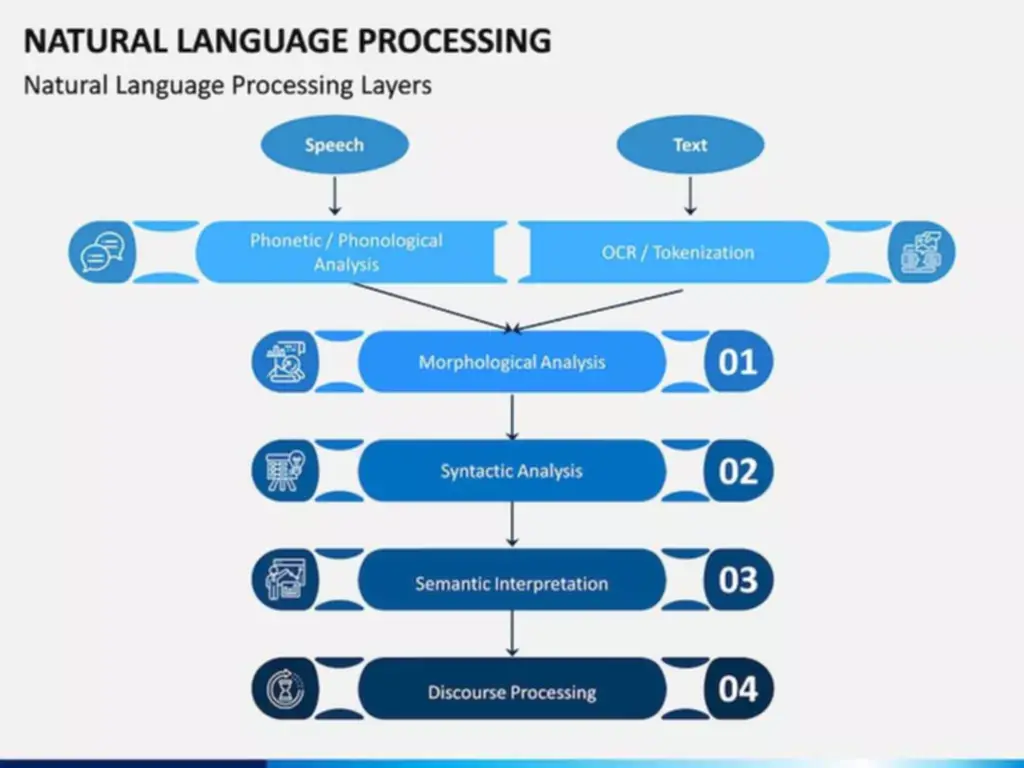
6. NLP in human resources: Eightfold.ai
The company uses AI chatbots to parse thousands of resumes, understand the skills and experiences listed, and quickly match candidates to job descriptions. This significantly speeds up the hiring process and ensures the best fit between candidates and job requirements.
7. NLP in legal services: Ross Intelligence
This organization uses natural language processing to automate contract analysis, due diligence, and legal research. These tools read and understand legal language, quickly surfacing relevant information from large volumes of documents, saving legal professionals countless hours of manual reading and reviewing.
8. NLP in travel & hospitality: Expedia
It uses NLP for sentiment analysis to understand customer feedback from reviews, social media, and surveys. This helps to identify pain points in customer experience, inform decisions on where to focus improvement efforts, and track changes in customer sentiment over time.
9. NLP in agriculture: AgriTech
This organization uses natural language processing examples to analyze agriculture-related texts such as weather reports, crop reports, and social media to predict market trends, crop yields, and other agriculture-related forecasts. This information can assist farmers and businesses in making informed decisions related to crop management and sales.
These natural language processing examples highlight the incredible adaptability of NLP, which offers practical advantages to companies of all sizes and industries. With the development of technology, new prospects for creativity, efficiency, and growth will emerge in the corporate world.
The role of NLP in business
Businesses in the digital economy continuously seek technical innovations to improve operations and give them a competitive advantage. A new wave of innovation in corporate processes is being driven by NLP, which is quickly changing the game.
The transformational effects of natural language processing examples on customer service are some of its most apparent products in the business. In a time where instantaneity is king, natural language-powered chatbots are revolutionizing client service. They accomplish things that human customer service representatives cannot, like handling incredible inquiries, operating continuously, and guaranteeing quick responses. These chatbots interact with consumers more organically and intuitively because computer learning helps them comprehend and interpret human language. Customer satisfaction and loyalty are dramatically increased by streamlining customer interactions.
Efficiency is a key priority for business, and natural language processing examples also play an essential role here. NLP technology enables organizations to accomplish more with less, whether automating customer service with chatbots, accelerating data analysis, or quickly measuring consumer mood. They are speeding up operations, lowering the margin of error, and raising output all around.
The future of NLP in business
There are many possible applications in the future, and they offer great promise for the corporate sector. As machine learning and AI develop, NLP is anticipated to grow in complexity, adaptability, and precision.
Personalized marketing is one possible use for natural language processing examples. Companies that use natural language processing customize marketing messages depending on the client’s preferences, actions, and emotions, increasing engagement rates. Additionally, that technology has the potential to produce even more sophisticated chatbots and virtual assistants that can comprehend complicated questions, sarcasm, and emotions, dramatically improving the user experience.
To prepare them for such breakthroughs, businesses should prioritize finding out nlp what is it examples of it, and its possible effects on their sectors. It can include investing in pertinent technology, upskilling staff members, or working with AI and natural language processing examples. Organizations should also promote an innovative and adaptable culture prepared to use emerging NLP developments.
Conclusion
The prospective uses of NLP are intriguing and promising as we look to the future. Companies that proactively recognize, use, and adapt to these technological breakthroughs will succeed in the cutthroat digital environment. Accepting NLP is now a need for company success in the current day and is no longer a choice.
Top Articles
How To Choose AI Software For Your Business?
I am here to help you!
Explore the possibility to hire a dedicated R&D team that helps your company to scale product development.



